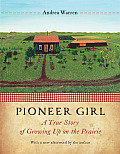As I mentioned in the previous post, sod walls were typically two-feet thick. If you compare the exterior window pictures to this one, you'll see a generous ledge on both sides. Also notice the plastered walls. In MAY B. I make mention of this nicety through a conversation with Mrs. Oblinger, the new bride from the city, and May, the frontier girl.
from poem 29:
"I hate this place," she whispers.
Before I think better, I say,
"He's left a shade tree out front,
he's plastered the walls,
and he's putting in a proper floor."
"What'd you say?"
Does she even remember I'm here?
"Mr. Oblinger's a good man," I try again.
"He wants to make this home for you."
She stands over me now.
"You think plaster makes a difference in this place?
Look at this."
She holds out her mud-caked skirt.
"It's filthy here!
The ceiling leaks.
Sometimes snakes get through!"
The cool sod's where they like to nest.
"They help with mice," I offer.
She glares.
Sod houses were one room with little to no privacy. Here you see a bed right up against the stove, a tree trunk meant to support the roof also used to hang clothing.
These benches are made from hewed logs and are a great example of the wood used for puncheon floors (the proper flooring May mentions above -- many lived with packed earth underfoot) : the smooth side of a log faced up, the curved side down.
One way families kept dirt from falling from the sod above was to cover the ceiling in muslin.
How would you fare living this way?
In the years I've been blogging, no topic has drawn more visitors here than sod houses. I hope this post, showing the exterior of a Kansas soddy, and the next, its interior, will satisfy the curious!
My mother took these pictures while on an Elderhostel tour in 2009, just as I was putting some finishing touches on MAY B.
This sod house is located outside Gaithersburg, Kansas. You can see the family had access to enough wood -- perhaps a sawmill nearby? -- to build a door, frame out several windows, and lay lumber for a roof (though they still chose to place sod on top).
A pitched roof would have made rainstorms more comfortable, as it was typical for water to seep through flat-roofed sod houses, where it would continue to "rain" inside well after a storm.
Sod bricks were typically 1' x 2' x 4". They weighed roughly fifty pounds and were stacked, grass-side down, so that walls were two-feet thick. These sturdy homes warm in the winter and cool in the summer. Structurally, they weren't especially neat and tidy. This poor wall looks like it's melting.
While researching for MAY B., I'd read about women who'd left comfortable lives determined to make this new world as familiar and lovely as possible. My mother included a note with this picture, the words of her tour guide:
Bird cages were kept to show some gentility or civility attesting to their previous lifestyle.
I included a stanza in MAY B.'s poem 80 that was inspired by this bird cage picture:
I button Ma's fine boots.
I wish I had insisted on keeping Hiram's old ones,
but I know Ma gave me hers
for herself as much as me,
a message to Mrs. Oblinger,
fresh from the city,
showing that women out here still have some grace.
My feet will hurt, I reckon,
before I make it far.
Come back Wednesday for views of the interior.
In an effort to give readers a taste of MAY B., I'm sharing books with similar genres and themes. Today's topic: frontier stories. All descriptions are taken from Amazon.com.
The Long Winter - Laura Ingalls Wilder

The adventures of Laura Ingalls and her family continue as Pa, Ma, Laura, Mary, Carrie, and little Grace bravely face the hard winter of 1880-81 in their little house in the Dakota Territory. Blizzards cover the little town with snow, cutting off all supplies from the outside. Soon there is almost no food left, so young Almanzo Wilder and a friend make a dangerous trip across the prairie to find some wheat. Finally a joyous Christmas is celebrated in a very unusual way in this most exciting of all the Little House books.
Pioneer Girl: A True Story of Growing up on the Prairie - Andrea Warren

Pioneer Girl is the true story of Grace McCance Snyder. In 1885, when Grace was three, she and her family became homesteaders on the windswept prairie of central Nebraska. They settled into a small sod house and hauled their water in barrels. Together they endured violent storms, drought, blizzards, and prairie fires.
Despite the hardships and dangers, Grace loved her life on the prairie. Weaving Grace’s story into the history of America’s heartland, award-winning author Andrea Warren writes not just of one spirited girl but of all the children who homesteaded with their families in the late 1800s, sharing the heartbreaks and joys of pioneer life.
Prairie Song - Pam Conrad
 3 Comments on Frontier Stories, last added: 1/25/2012
3 Comments on Frontier Stories, last added: 1/25/2012













 3 Comments on Frontier Stories, last added: 1/25/2012
3 Comments on Frontier Stories, last added: 1/25/2012




I always wondered about the ceilings... Great pictures!
Wow, this really brings the image of living in a sod house to life! And I thought I had a pretty clear idea after reading May B. It's like living in a small cave; maybe even worse.
Yes, dark and cavelike. But the efforts to prettify things is really something.